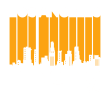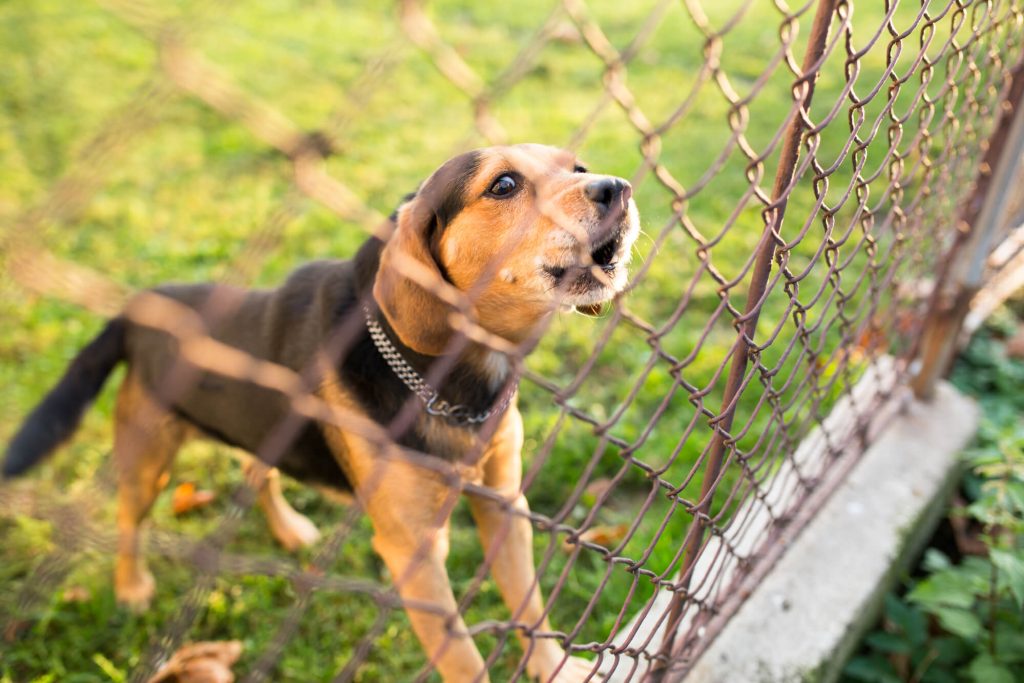As responsible dog owners, you can’t have everything done by your dog trainer. You want to keep your dog safe while still letting them run free in the yard without worrying about them getting lost or getting attacked by other dogs. By adding a fence in your backyard, you are also adding a layer of protection to keep your family and fur friends safe. But given all the available fencing options, choosing the right dog fence ideas are essential to know and this article will help you with just that.
5 Kind Of Fences For That Are Also Dog Friendly
1.) Chain Link Fence
Chain link fences or wire fences are made from galvanized steel or chicken wire that are attached to aluminum poles that are buried beneath the ground to keep the fence sturdy. They are heavy-duty, easy to install, and affordable making them a cost-effective and good option for big yards.
Pros:
– Generally cheap
– Very Durable
– Easy to install
– Little to no maintenance
Cons:
– They don’t look stylish
– Offers little privacy
– Dogs can climb over or chew through
2.) Electric / Invisible Fence (Underground)
Electric invisible fences include a transmitter, a receiver collar, and a wire that has to be buried beneath the ground that creates an invisible barrier for you to contain your dog. It also acts as a way to mark down your property lines and serves as a way for you to train your dog.
This type of dog fence is virtually undetectable that keeps your pup within your property without any physical fences. This costs less than a traditional fence, given the material and fence installation, and has little maintenance. Although, there is a safety concern because of the electric current. If used properly, you can avoid hurting your dog but make sure to start with the lowest setting when training your dog.
Pros:
– Cheaper than traditional fencing
– Little maintenance
– Customizable based on property design
– Yard will look simple and beautiful
– Contain dogs easily
Cons:
– Requires you to train your dogs
– Not suitable for all kinds of dogs
– Won’t keep out strangers and other animals
– You can hurt your dog accidentally
3.) Wooden Fence
A wooden privacy fence or a split rail fence is also a great option to contain your dogs, especially for dogs who love to climb or jump over. Wood fences are typically made from pine, cedar, redwood, and cypress and offer the needed privacy and security. The downside is, they can be more expensive than other fencing options, labor-intensive, and require regular maintenance.
Pros:
– Highly customizable
– Offers needed privacy and security
– Very Durable
– Can contain hyper dogs
Cons:
– More expensive than other fencing options
– Labor intensive
– Requires frequent maintenance
4.) Picket Fence
Picket fencing is another great option which is similar to a wooden privacy fence. Comparatively, is it smaller in size and has smaller slats compared to large fencing panels with a wood fence. They also provide an aesthetic appeal to your home and that’s their primary objective. With this, they are not that good at containing larger dogs and won’t definitely keep a small dog out.
Pros:
– Very cheap
– Has the aesthetic appeal
– Available in a variety of colors and style fence
Cons:
– Requires frequent care and maintenance
– Not that durable
– Only ideal for relaxed dogs
– A smaller dog can go through
– Other animals can also get in
5.) Brick Fence
Usually, bricks are composed of concrete, sand, lime, or fly ash that is plastered together to form a physical barrier that comes out as a brick fence. They are very sturdy and durable and ideal for larger dogs and those who are very hyper for it would be impossible for them to knock it over, climb over or even jump over.
Brick fences offer complete privacy and security and are great for a long-term investment. In addition, they are easy to clean and require little to no maintenance. The only downside to this type of fence is that it can be very costly and is very time-consuming for you would be needing a professional to help you set it up.
Pros:
– Highly durable
– Can contain strong and large dogs
– Provides a great deal of privacy and security
– Has little to no maintenance
Cons:
– Very costly
– Installation can take a long time
Thing To Consider When Picking The Best Dog-Friendly Fences
Now that you’re familiar with the different types of fence for dogs, this is the time you come up with a decision that is both suitable for your home and dogs. Here are things to consider:
- Installation and Cost: Installing the fences by yourself will save you tons of money, if not, the additional cost of professional help can make things more expensive. That’s why you should consider your budget if you could afford the initial installation cost and maintenance.
- Size and shape of your yard: Do you have a small or large yard that you want to enclose? Does it have a lot of sides? The answers to these questions are essential to get the right fence for you since other types of fence like the wireless won’t work well with an irregularly shaped yard.
- Aesthetics: Do you want an aesthetically pleasing yard? Do you like the look of wood, aluminum, or vinyl fencing? The choice will depend on the look of your home and your references.
- Durability: Each type of fence offers different durability, choosing the right fence will depend on the fence that you need. Do you want something that can withstand chewing? Can it prevent your dog that likes to dig under the ground? Do you want a material more resistant to weather changes? Choose the best one for you.
- Ease of Maintenance: Some fences require frequent maintenance while others do not require or only involve little maintenance. If you want less stress, choose a fence that can still look good even with a little cleaning.
There you have it. Happy fencing!



